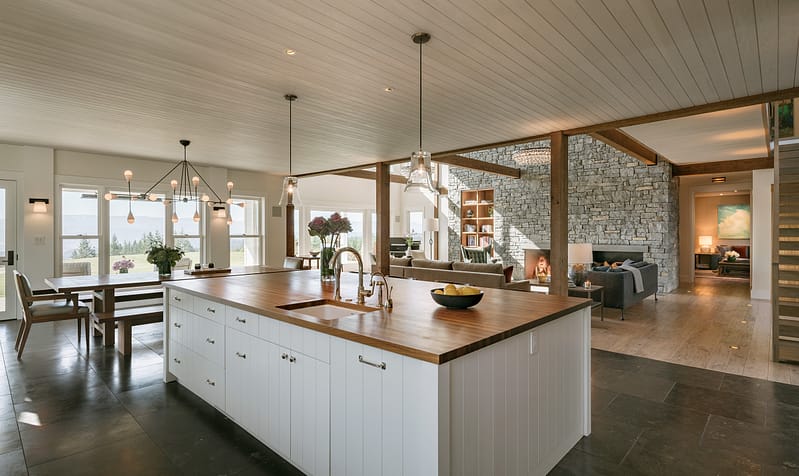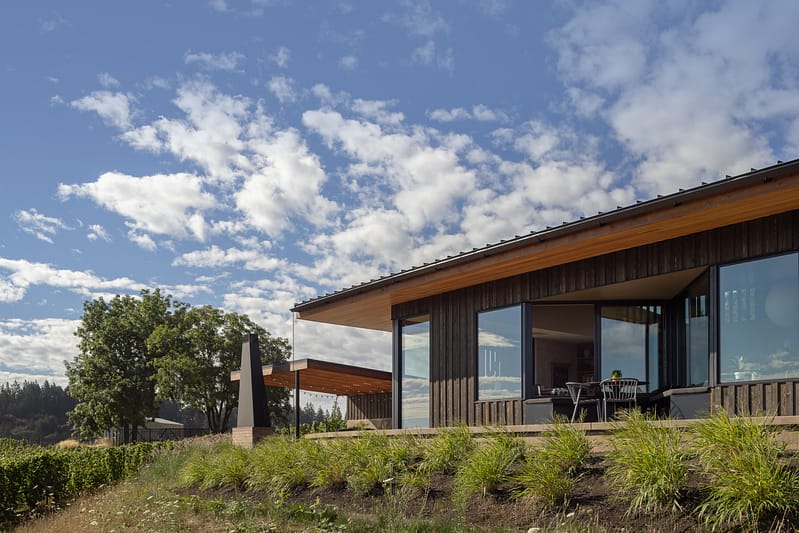H&H Woodshop Manager Dan Palmer collaborated recently with Alissa Pulcrano of bright designlab on the design of custom dining table for a client in New Hampshire. “The client said her home had a Southwestern Mission style so we tried to design to that aesthetic but with a bit of a modern update to the look,” said Dan.
(Interested in custom furniture? Check out our millwork services page.)
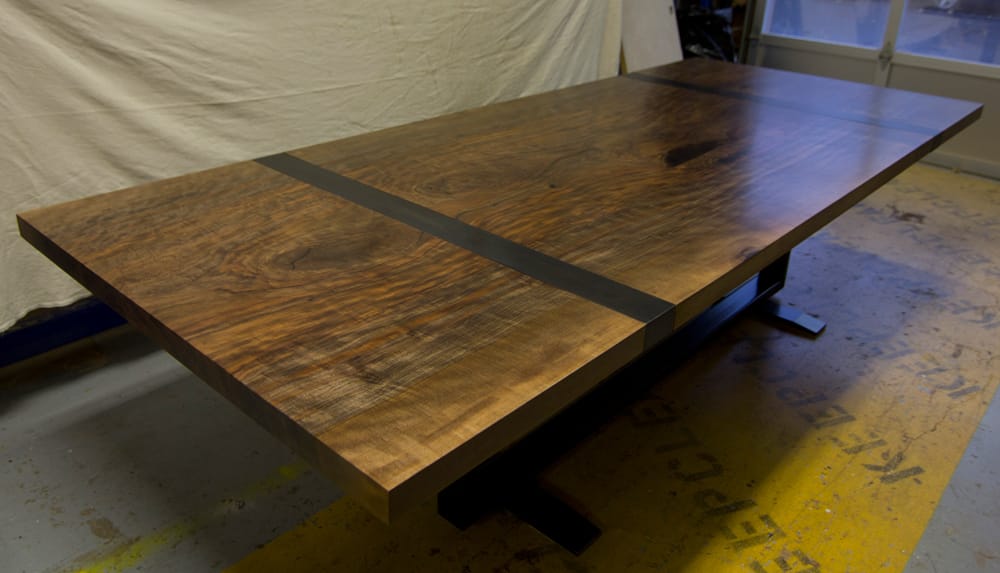
The client wanted a very wide and long table made of wood with a lot of durability, warmth, and character. Given these parameters, Dan suggested Western (also known as Claro or Oregon) Walnut. After online image research she agreed and it was up to Dan to secure a slab large enough for the 10-foot-long, 50 inches wide dining table.
The slab he eventually found at Goby Walnut & Western Hardwoods was salvaged from a Portland street tree. The wood had been air dried for two years but it still needed to be put into a kiln for 12 – 16 weeks to dry it out completely. “It took awhile,” said Dan. “But the result is a slab that is nice and dry – it’s not going to move, crack, or split.”
Dan cut the slab into three pieces to include the steel tube details. From above the slab looks like one continuous piece intersected by two steel bands.
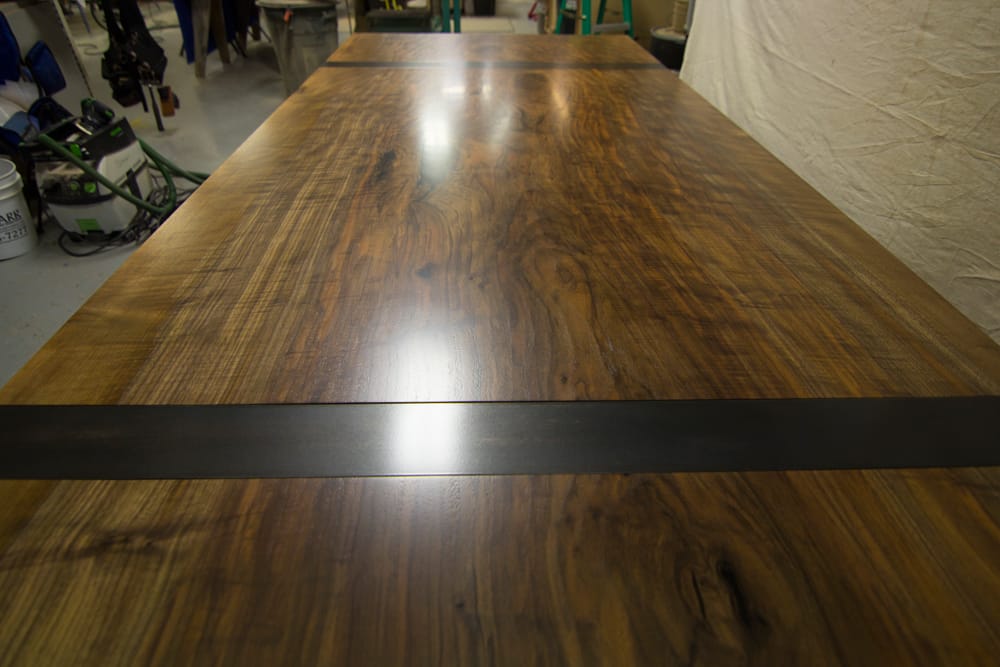
Dan used an oil-based Bona Woodline commercial floor finish for the top. It works well for this project because it has the durability of a floor finish but the richness in color of an oil-based finish.
The table is heavy – the top alone weighs 675 pounds. The steel base, fabricated by Brian Parnell of Parnell Design and Fabrication, weighs in around 400 pounds. That’s about 1,075 pounds in total!
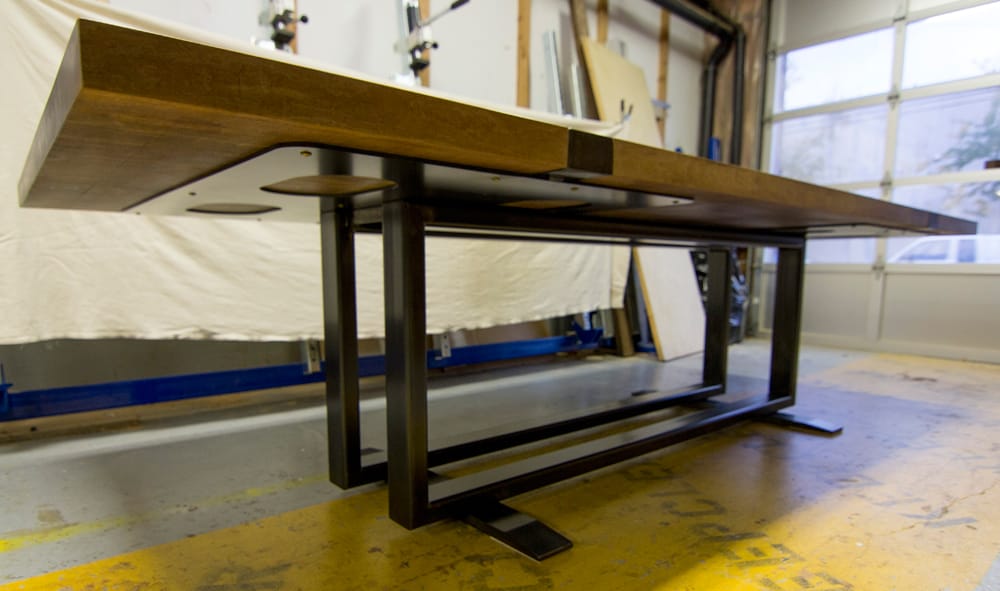
The two 2 1/4″ x 4″ steel tubes are attached to a continuous steel plate which is fastened to the three pieces of tabletop wood with lag screws from underneath. This tabletop assembly is hex bolted to the base assembly with a steel-to-steel connection. The two pieces can be taken apart for shipping.
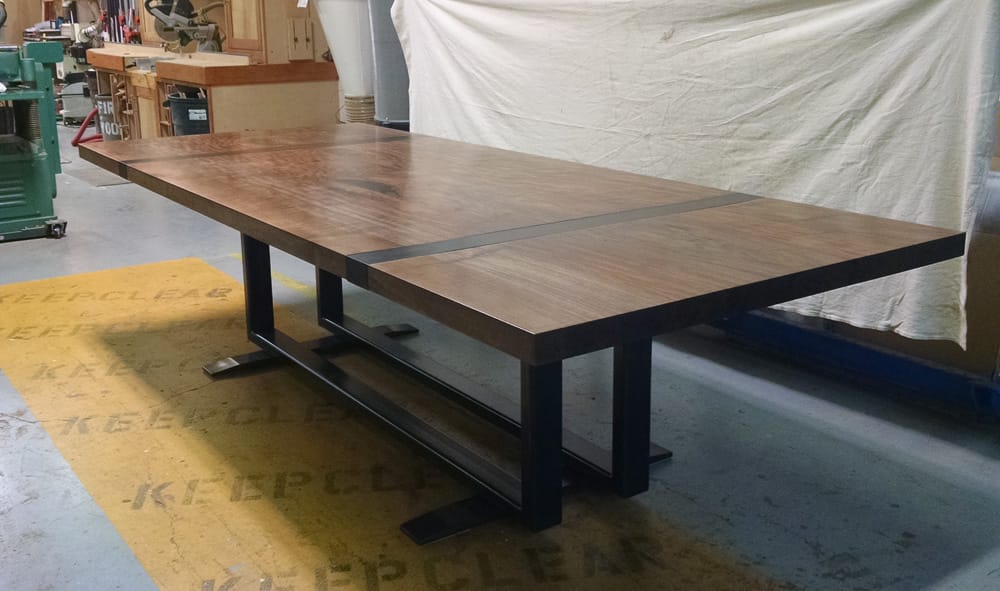
The dining table is currently en route to its home in New Hampshire, set to arrive just in time for Thanksgiving.


